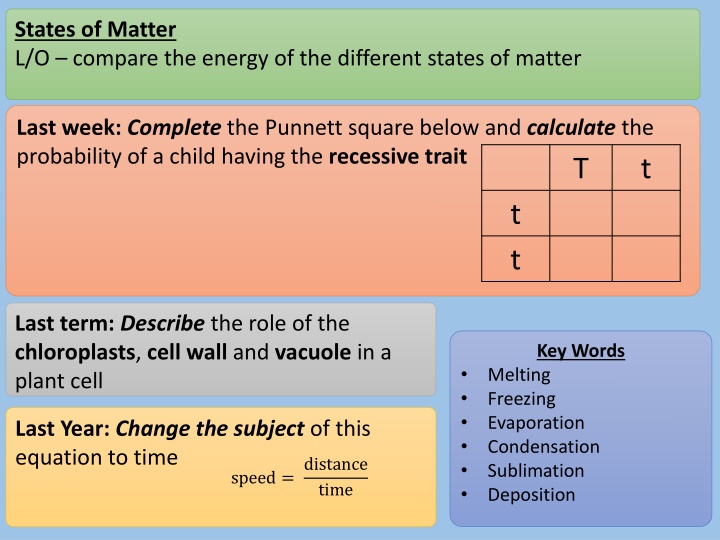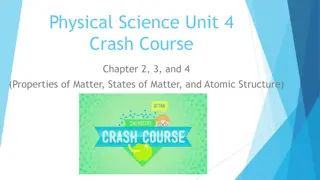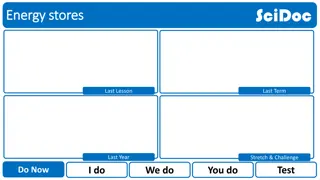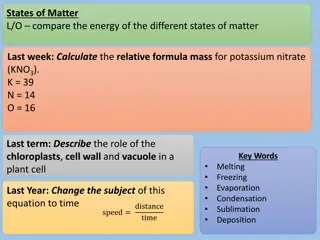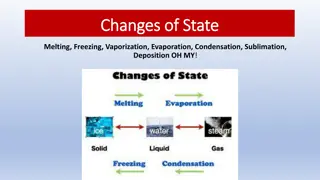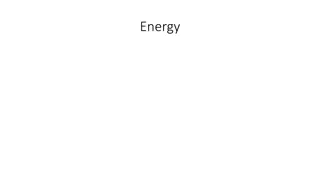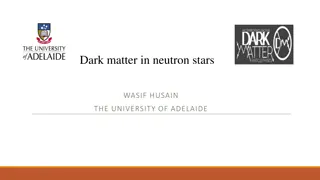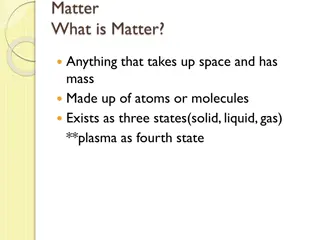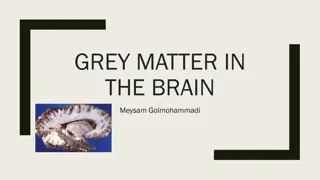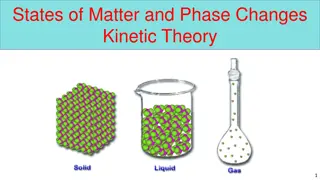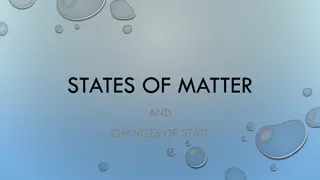States of Matter: Energy and Changes
Explore the energy differences between the states of matter, learn about the properties of solids, liquids, and gases, and understand how energy affects state changes through melting, freezing, evaporation, condensation, sublimation, and deposition. Discover the roles of chloroplasts, cell walls, and vacuoles in plant cells, and delve into predicting state changes based on temperature and identifying the states of different substances.
Download Presentation

Please find below an Image/Link to download the presentation.
The content on the website is provided AS IS for your information and personal use only. It may not be sold, licensed, or shared on other websites without obtaining consent from the author.If you encounter any issues during the download, it is possible that the publisher has removed the file from their server.
You are allowed to download the files provided on this website for personal or commercial use, subject to the condition that they are used lawfully. All files are the property of their respective owners.
The content on the website is provided AS IS for your information and personal use only. It may not be sold, licensed, or shared on other websites without obtaining consent from the author.
E N D
Presentation Transcript
States of Matter L/O compare the energy of the different states of matter Last week:Complete the Punnett square below and calculatethe probability of a child having the recessive trait T t t t Last term: Describe the role of the chloroplasts, cell wall and vacuole in a plant cell Key Words Melting Freezing Evaporation Condensation Sublimation Deposition Last Year: Change the subject of this equation to time distance time speed =
First Attempt In Learning Draw the particles in a solid, liquid and gas from memory
First Attempt In Learning Draw the particles in a solid, liquid and gas from memory SAIL Correct your diagrams and explain why only a solid holds a fixed shape Extension Explain why only a gas can be compressed
Watch this video summarising the properties of the 3 states of matter https://www.youtube.com/watch?v=JY6f_r4dHpg
Everyone: label the diagram using the key words Condensation Deposition Evaporation Freezing Melting Sublimation Bronze: Explain how you can cause these changes Silver: Explain which state of matter has the highest energy and which has the lowest Gold: Explain how a change in energy can cause a gas to turn back into a liquid SOLID LIQUID GAS
The amount of energy it takes to change the state of a substance depends on how strong the forces are between the molecules. The forces holding the molecules together in sodium chloride are much stronger than the ones holding the molecules together in water. This means sodium chloride has a high melting point and boiling point than water. Exam Question Identify the state of matter for sodium chloride, water and hydrogen at room temperature (25oC) [3 marks]
You can predict whether a substance is a solid, liquid or gas at a particular temperature. Current temperature is lower than the melting point = solid Current temperature is between the melting and boiling points = liquid Current temperature is higher than the boiling point = gas Exam Question The melting point of oxygen is -218 C and its boiling point is -183 C. Predict the state of oxygen at -200 C. [1 mark]
When you plot a graph showing the temperature of a substance, you can identify the melting and boiling points. The graph will be horizontal when a change of state is taking place. This happens because all the energy is being used to break the forces between the molecules and change state instead of increasing the temperature.
Copy and complete the graph using the following words: Solid Liquid Gas Condensing Freezing
Create it Create a method that would allow you to plot a cooling curve for stearic acid as it cools from a liquid to a solid. Stearic acid is like candle wax. You would be able to melt it by putting a test tube of stearic acid into a beaker of boiling water. If you are not sure, watch these video to help: https://www.youtube.com/watch?v=vQKKJOW1fE g https://www.youtube.com/watch?v=YUWJ2jGhE0 M
